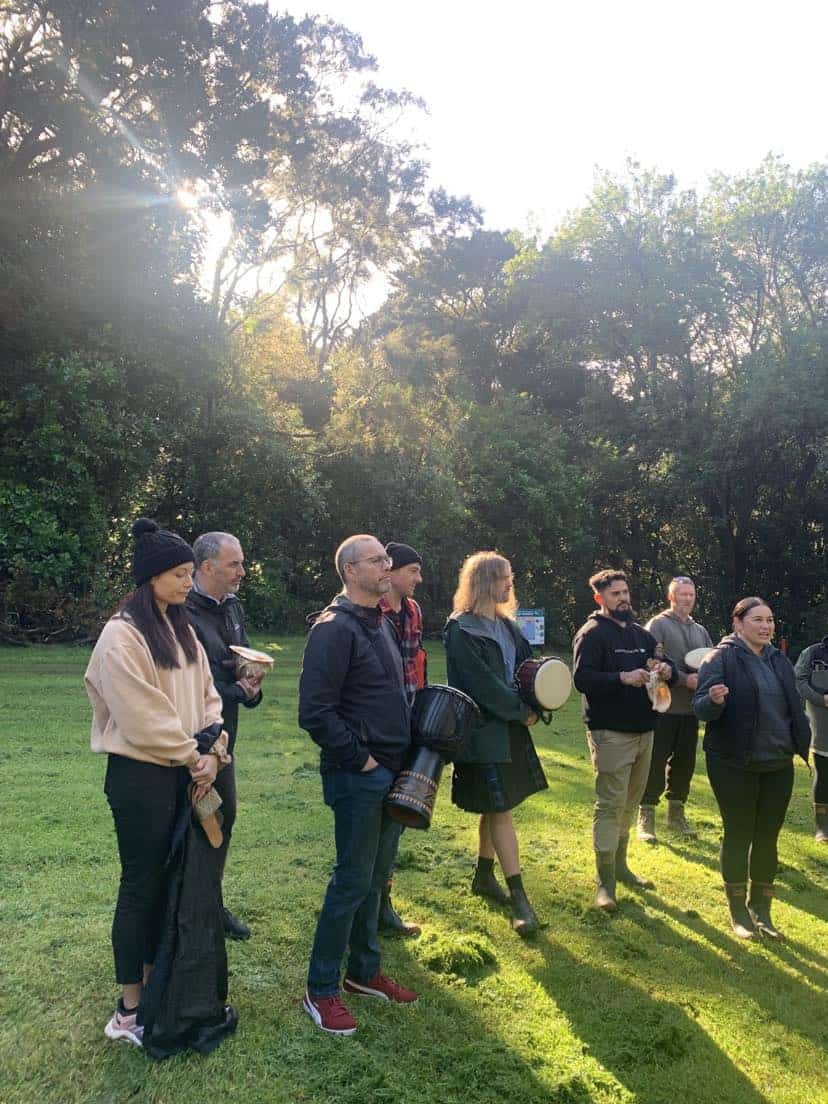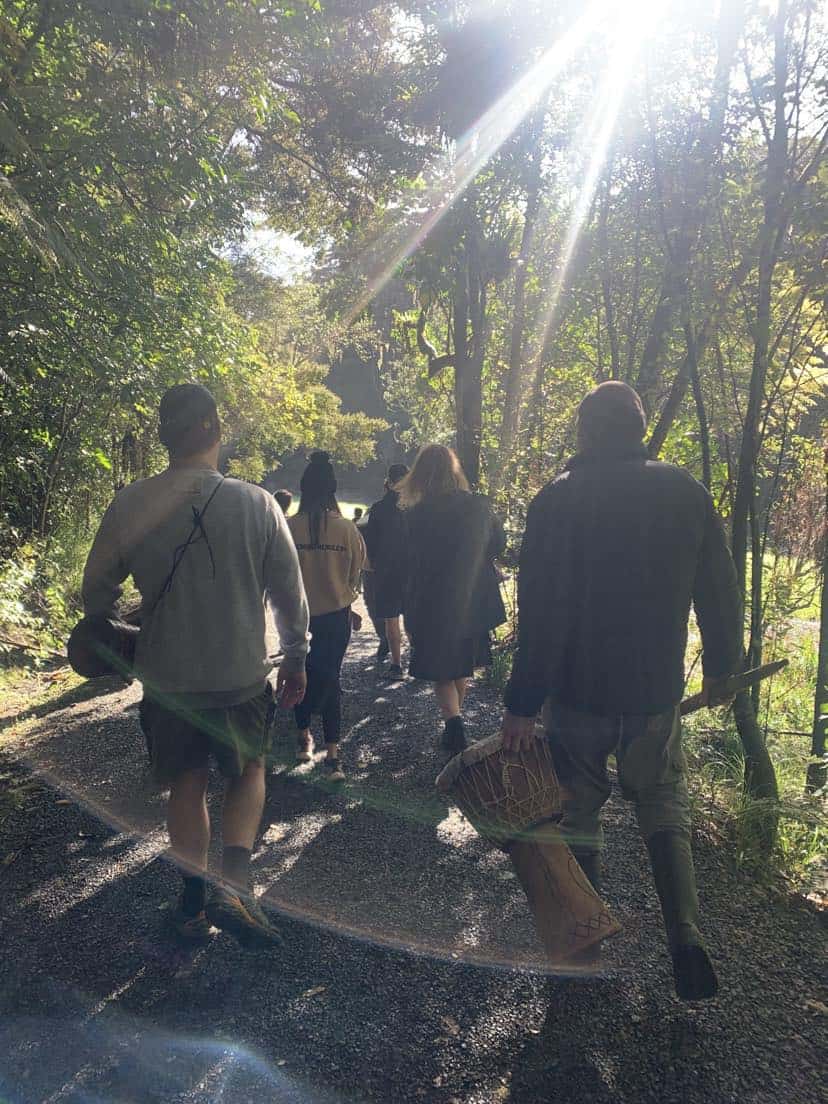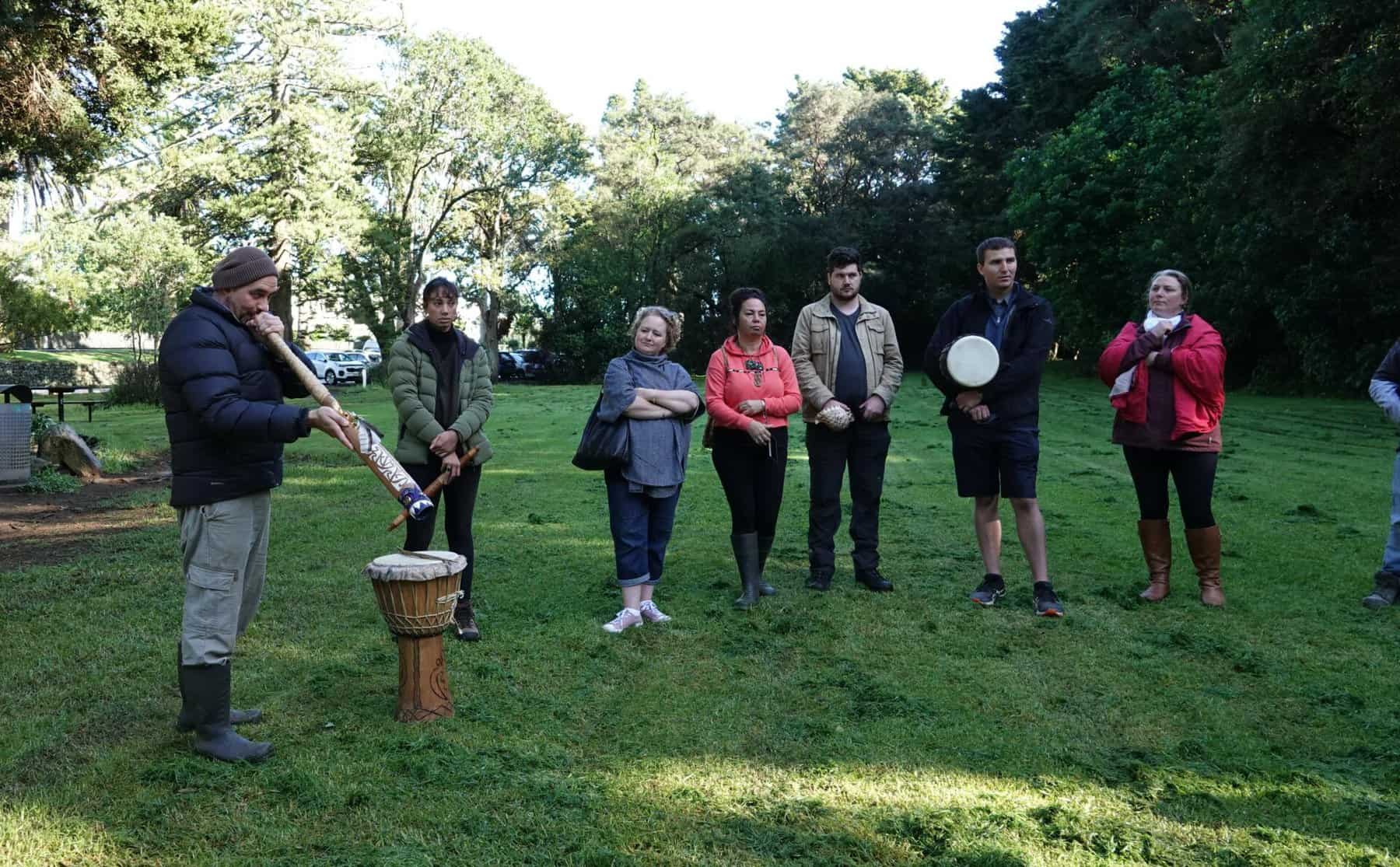We met at Muir Park, not too far from where the Hatea River straddles Mount Parihaka.
As we gathered, Kelly Kahukiwa (Ngāti Whakaue, Ngāi Tūhoe, Te Aitanga-a-Māhaki) passed around some of the taonga pūoro (musical instruments of Te Ao Māori) we would get to know over the morning. The taonga pūoro were both traditional, like the pūtātara (conch trumpets) and pūkāea (long wooden trumpets) as well as some adopted into the practice, like the skin drums (pahū tamarua).
Kelly Kahukiwa, an artist, intercultural practitioner and Indigenous researcher, has special interest in how music can nourish and strengthen well-being. He was supported by other practitioners and kaikōrero (speakers), including Blake Te Kata (Ngāruahine Rangi, Ngāti Haua Piko) and Maudena Wood (Ngāi Tu, Ngāpuhi).
As delegates got a feel for the taonga pūoro, Kelly began discussing mauri, the connective life force in Te Ao Māori. Since mauri permeates through everything imbued with life, it also helps describe the relationships and whakapapa (genealogy) between the spiritual and the physical worlds; the land, water, plants, animals and people, as well as spiritual ancestors, the atua – like Rangi-nui, Tama-nui-te-rā, and Io-matua-te-kore.
In describing Io, a supreme atua from whom all other atua descend, Kelly emphasised that spiritual traditions between iwi, hapū and whānau can vary, and an individual’s relationship with their higher power is deeply personal. Kelly’s prompt for the field trip itself was “to create a deeper, personal connection with the ngahere”.
After a short hīkoi up Parihaka, we arrived at a clearing underneath the branches of a pūriri tree. In this natural theatre there was time to hear from kaikōrero, ask questions, and for ihirangaranga – a vibration treatment using pūtātara and pūkāea performed by Kelly and Blake.


Blake Te Kata, a mātauranga and rongoā Māori practitioner, demonstrated his tikanga (protocol) for gathering rongoā (medicine) from the kawakawa growing in the dripline of the pūriri tree. Blake also shared his expertise in how spermaceti (oil from the heads of parāoa – sperm whales) can be used in rongoā.
Maudena Wood is a mātauranga Māori practitioner who has dedicated herself to exploring taonga pūoro since first hearing hue puruhau (a musical instrument fashioned from a gourd) at a Matariki wānanga in 2022.
“Taonga pūoro is something you have to experience,” says Maudena, speaking about the rewards of the hīkoi, and the depth of knowledge available there. “You need to get in there amongst it and hear the instruments played, as well as the kōrero about their origins.”
Most memorable for Maudena were the occasions when, after meditating to the sounds of the ngahere, the group was invited to play taonga pūoro together.
“When we settled and became tau, and listened to the manu, the wind . . . It developed our connection before we started playing together,” says Maudena.
“There’s a special quality that comes from the ihirangaranga, the sound vibration. When we all play together in unison it strengthens our connections – with each other, and also to the ngahere.”
Find out more about Kelly’s practice by watching his recently released video – Mauri Tu, Mauri Ora.
– Kerry Donovan Brown
